Dashi Chazuke is one of the most popular types of Ochazuke in Japan. The aroma of dashi broth enhances the flavor of rice, making it a simple yet delightful dish. You will definitely find yourself wanting to make it again and again.
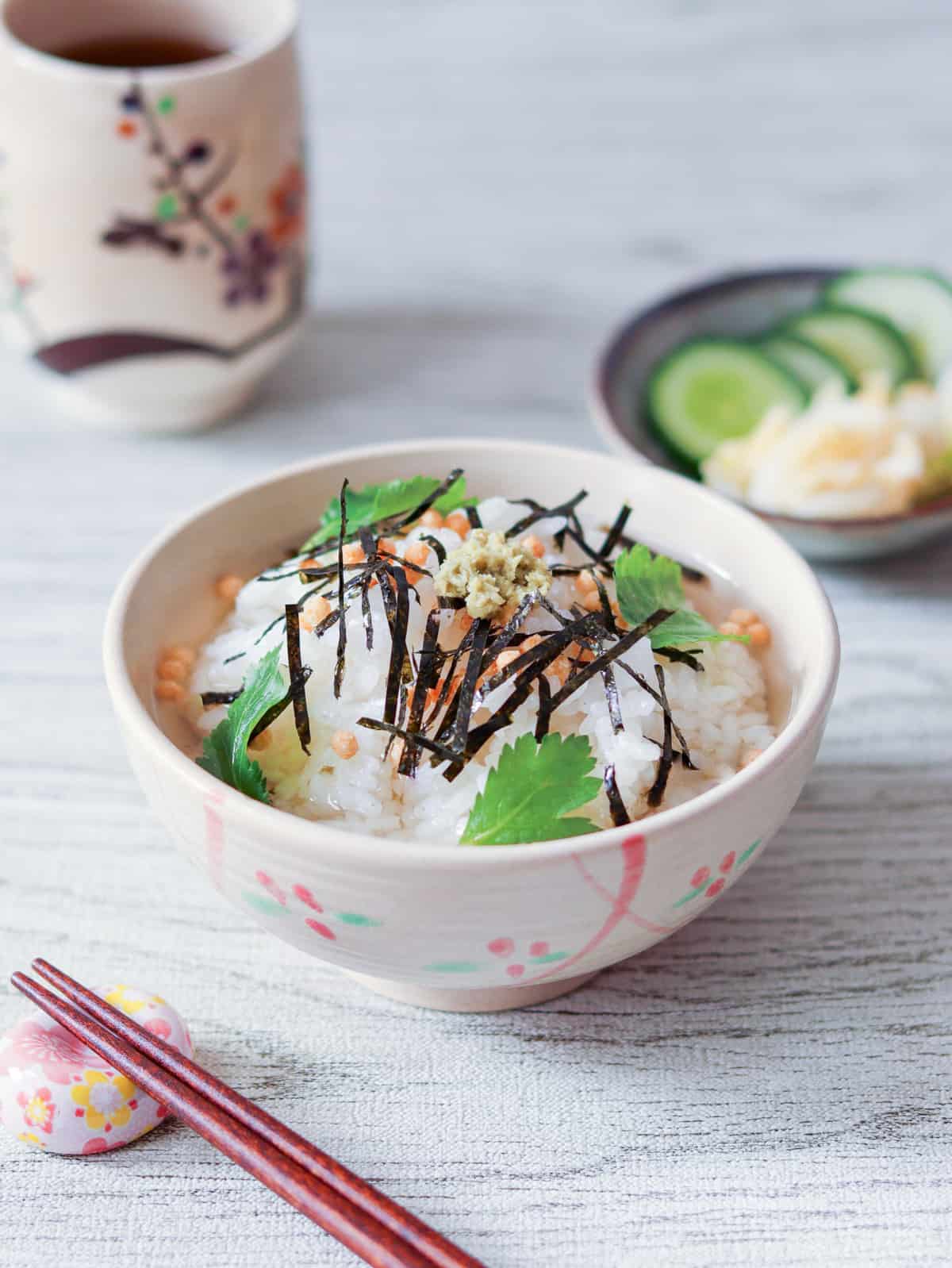
Jump to:
What is Dashi Chazuke?
Dashi Chazuke is a dish made by pouring dashi broth over rice. "Dashi" means Japanese broth, and "Chazuke" refers to a rice dish poured over flavorful liquid. Since it meets the definition of chazuke, this dish is also simply called 'Ochazuke.'
Ochazuke can be easily prepared using Japanese tea, but when dashi broth is used, a more authentic flavor can be achieved. If making dashi seems like too much trouble, you can also use dashi granules. Enjoy it any way you like.
To learn more about making 'Ochazuke using tea,' please refer to this linked page. This version offers a distinct flavor as well, so I recommend giving it a try.
What types of dashi is used?
You can use any type of dashi for this dish. This recipe uses "Awase Dashi," which combines kombu dashi and bonito dashi, the most common dashi in Japan, but dashi made from fish, such as sea bream or mackerel, is also popular.
For vegan options, Kombu Dashi or Shiitake Dashi would be suitable. Feel free to experiment with this dish using your favorite dashi. The method for making dashi is also described in this recipe, but for more details, please refer to the respective linked pages.
Toppings and variations
The toppings for dashi chazuke are the same as those for ochazuke using tea, including bubu arare (tiny Japanese rice crackers), shredded nori seaweed, toasted sesame seeds, mitsuba (Japanese parsley), and shiso leaves (perilla). Wasabi is also often added as a condiment. Additionally, it is also common to add salmon to make "Salmon Chazuke" or umeboshi (salt-pickled plums) to make "Ume Chazuke."
Adding sashimi (thinly sliced raw eating-grade fish) further enhances the flavor of this dish. My top recommendation is tai fish sashimi (Japanese red snapper). If it is available in your area, give it a try.
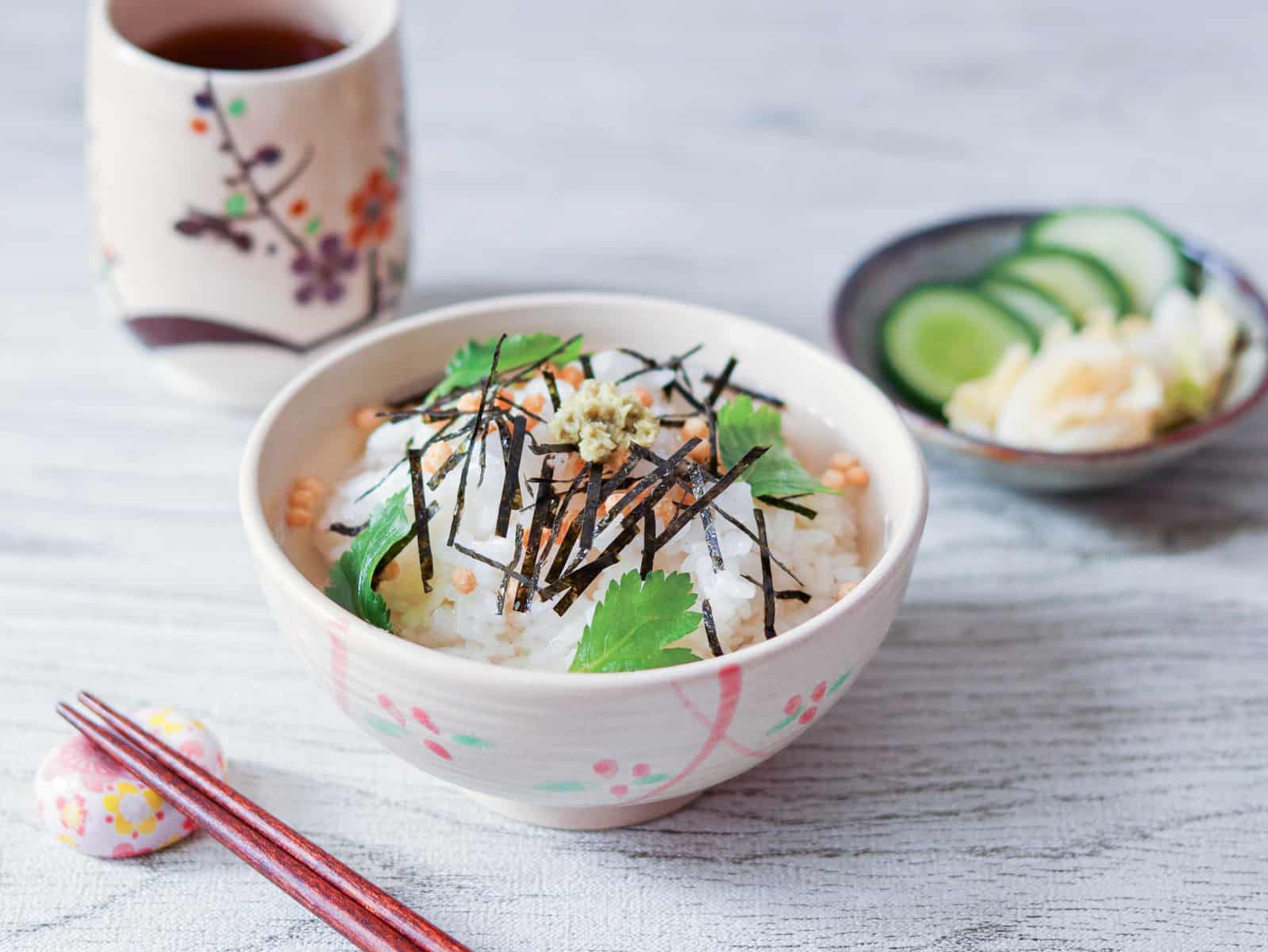
Ingredients
- 11.3 oz cooked Japanese white rice
- ¼ tsp salt
Awase dashi:
- 2 cups water
- 0.17 oz kombu (dried kelp)
- ½ cup bonito flakes (katsuobushi)
Toppings (optional):
- 2 tsp bubu arare (tiny Japanese rice crackers)
- 2 tsp shredded nori seaweed
- 8 mitsuba leaves (Japanese parsley)
- 1 tsp wasabi
Step-by-step instructions
🕒 Total 45 mins
If you have dashi broth or are using dashi granules, start from step 5. When using dashi granules, dissolve them in hot water (⅚ cup/400 ml for 2 servings). In this case, you may not need to add salt because they might already contain some.
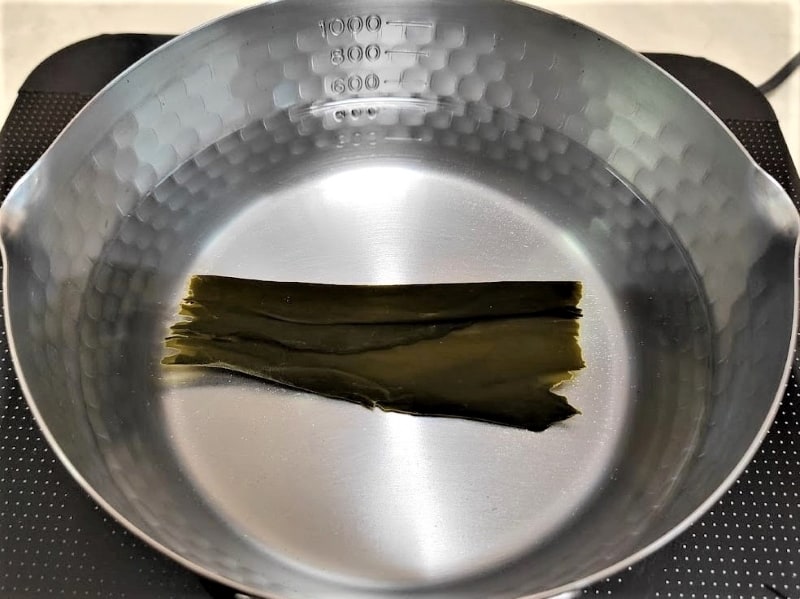
Step 1
Put water and kombu in a pot and let it sit for at least 30 minutes until the kombu softens.
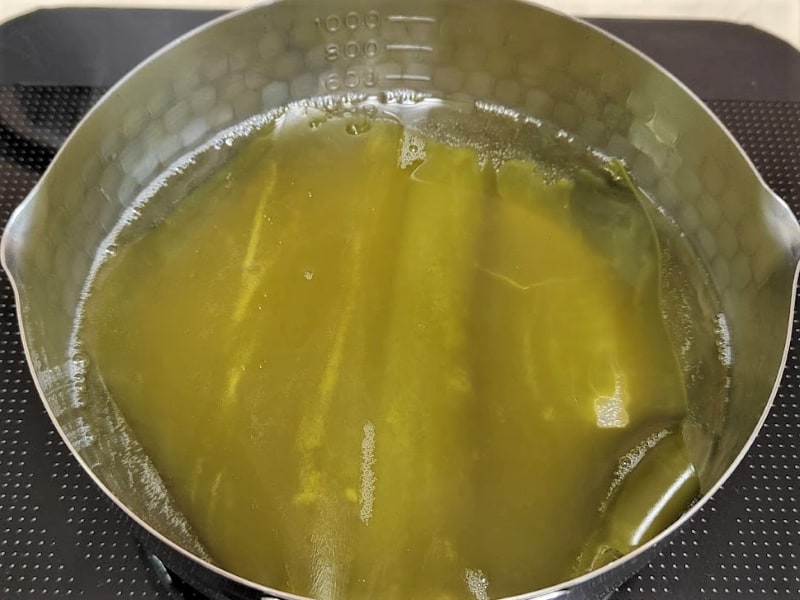
Step 2
Heat the pot over very low heat for about 10 minutes (for 2 servings). When small bubbles appear on the surface of the liquid, remove the kombu.
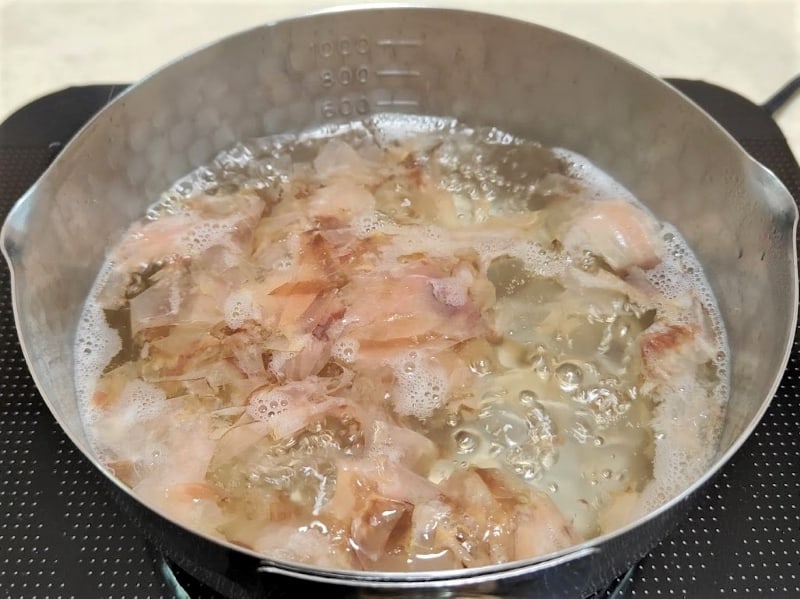
Step 3
Increase the heat and bring the water (kombu dashi) to a boil. Once boiling, reduce the heat to low, add bonito flakes, and let it simmer for 2 minutes.
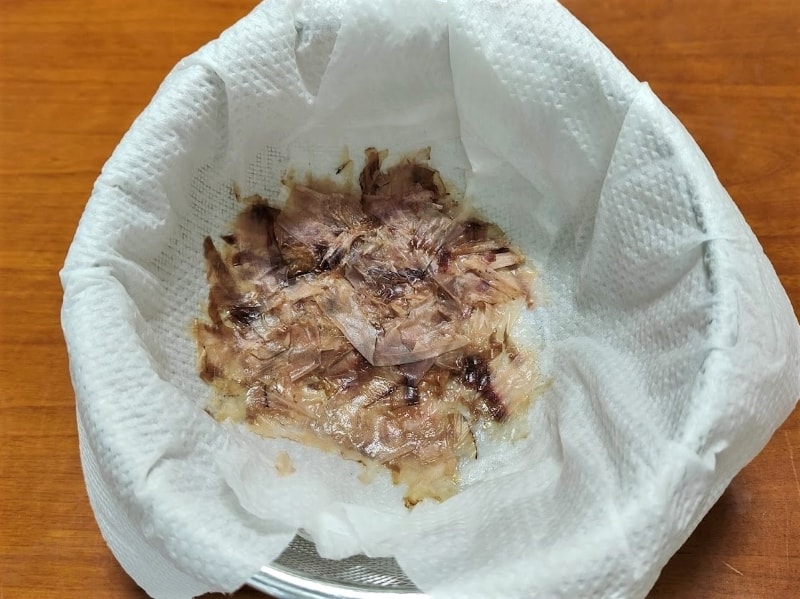
Step 4
Turn off the heat and strain the mixture through a sieve lined with paper towels or a cloth (such as cheesecloth). Alternatively, if you don't mind having fine bonito flakes remaining, you can simply use a fine-mesh strainer. Awase dashi, which combines kombu dashi and bonito dashi, is now ready.
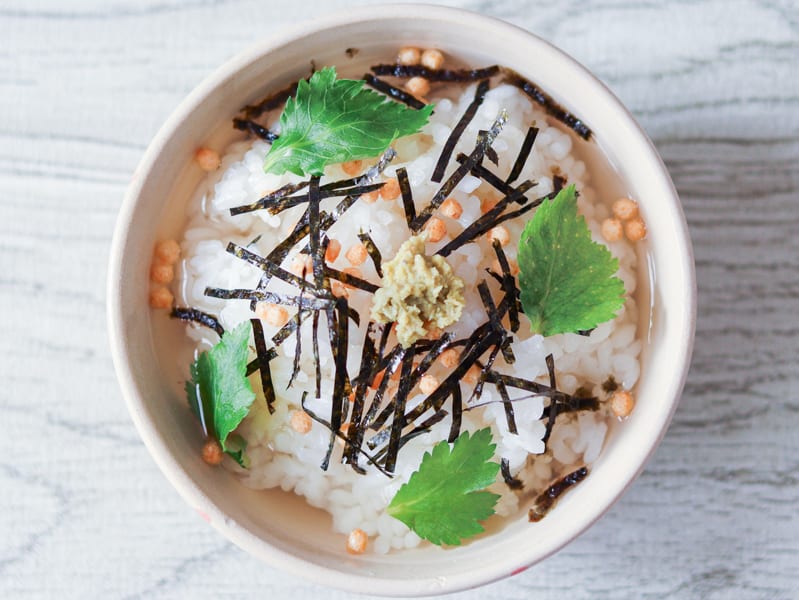
Step 5
Sprinkle salt on top of the rice in each bowl and pour enough dashi to cover about ¾ of the rice. Then, add bubu arare, shredded nori, mitsuba leaves, and wasabi to taste.
To Store
It is not suitable for storage as the rice absorbs the dashi. Only make enough for immediate consumption.
Recipe Card
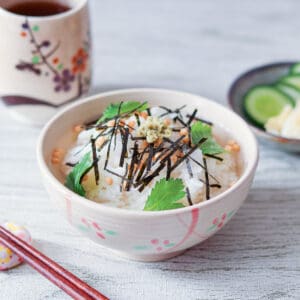
Dashi Chazuke (Dashi Broth over Rice)
Ingredients
- 11.3 oz cooked Japanese white rice
- ¼ tsp salt
Awase dashi:
- 2 cups water
- 0.17 oz kombu (dried kelp)
- ½ cup bonito flakes (katsuobushi)
Toppings (optional):
- 2 tsp bubu arare (tiny Japanese rice crackers)
- 2 tsp shredded nori seaweed
- 8 mitsuba leaves (Japanese parsley)
- 1 tsp wasabi
Instructions
- Put water and kombu in a pot and let it sit for at least 30 minutes until the kombu softens.
- Heat the pot over very low heat for about 10 minutes (for 2 servings). When small bubbles appear on the surface of the liquid, remove the kombu.
- Increase the heat and bring the water (kombu dashi) to a boil. Once boiling, reduce the heat to low, add bonito flakes, and let it simmer for 2 minutes.
- Turn off the heat and strain the mixture through a sieve lined with paper towels or a cloth (such as cheesecloth). Alternatively, if you don't mind having fine bonito flakes remaining, you can simply use a fine-mesh strainer. Awase dashi, which combines kombu dashi and bonito dashi, is now ready.
- Sprinkle salt on top of the rice in each bowl and pour enough dashi to cover about ¾ of the rice. Then, add bubu arare, shredded nori, mitsuba leaves, and wasabi to taste.
Notes
- If you have dashi broth or are using dashi granules, start from step 5. When using dashi granules, dissolve them in hot water (⅚ cup/400 ml for 2 servings). In this case, you may not need to add salt because they might already contain some.
- It is not suitable for storage as the rice absorbs the dashi. Only make enough for immediate consumption.

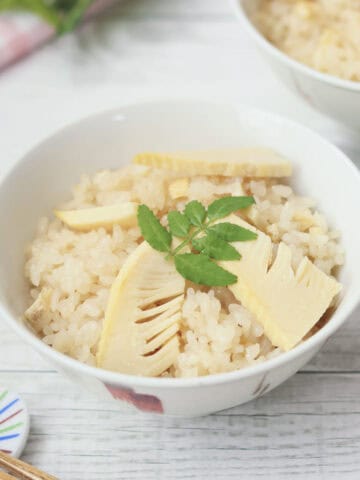
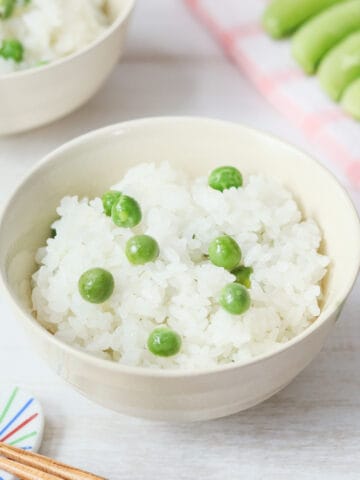
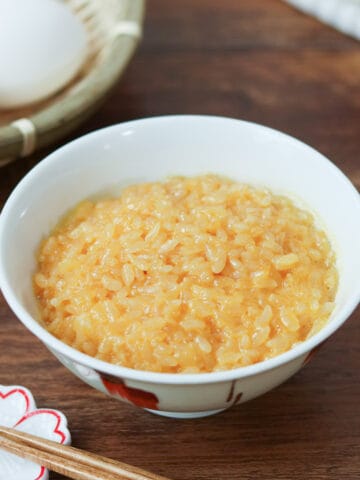
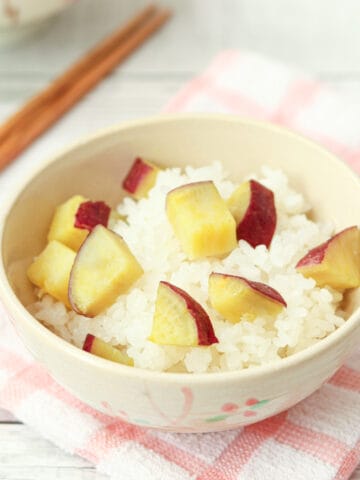
Leave a Reply